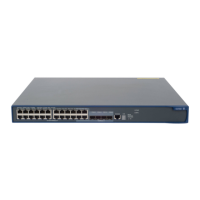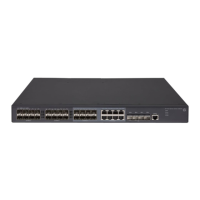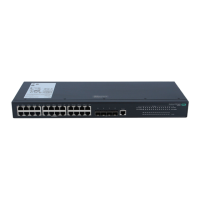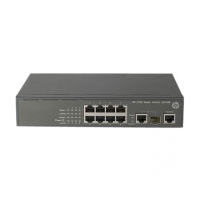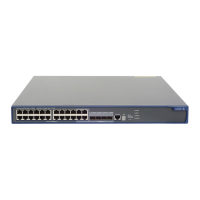353
Displaying and maintaining OSPFv3
Execute display commands in any view.
Pur
ose Command
Display information about the routes to
OSPFv3 ABR and ASBR.
display ospfv3 [ process-id ] abr-asbr
Display summary route information on
the OSPFv3 ABR.
display ospfv3 [ process-id ] [ area area-id ] abr-summary
[ ipv6-address prefix-length ] [ verbose ]
Display OSPFv3 process information. display ospfv3 [ process-id ] [ verbose ]
Display OSPFv3 GR information. display ospfv3 [ process-id ] graceful-restart
Display OSPFv3 interface information.
display ospfv3 [ process-id ] interface [ interface-type
interface-number | verbose ]
Display OSPFv3 LSDB information.
display ospfv3 [ process-id ] lsdb [ { external | grace | inter-prefix |
inter-router | intra-prefix | link | network | router | unknown
[ type ] } [ link-state-id ] [ originate-router router-id | self-originate ] |
statistics | total | verbose ]
Display OSPFv3 next hop information.
display ospfv3 [ process-id ] nexthop
Display OSPFv3 neighbor information.
display ospfv3 [ process-id ] [ area area-id ] peer [ [ interface-type
interface-number ] [ verbose ] | peer-router-id | statistics ]
Display OSPFv3 request list
information.
display ospfv3 [ process-id ] [ area area-id ] request-queue
[ interface-type interface-number ] [ neighbor-id ]
Display OSPFv3 retransmission list
information.
display ospfv3 [ process-id ] [ area area-id ] retrans-queue
[ interface-type interface-number ] [ neighbor-id ]
Display OSPFv3 routing information. display ospfv3 [ process-id ] routing [ ipv6-address prefix-length ]
Display OSPFv3 topology information.
display ospfv3 [ process-id ] [ area area-id ] spf-tree [ verbose ]
Display OSPFv3 statistics. display ospfv3 [ process-id ] statistics [ error ]
Display OSPFv3 virtual link
information.
display ospfv3 [ process-id ] vlink
OSPFv3 configuration examples
Configuring OSPFv3 areas
Network requirements
As shown in Figure 86:
• Enable OSPFv3 on all routers.
• Split the AS into three areas.
• Configure Router B and Router C as ABRs to forward routing information between areas.
• Configure Area 2 as a stub area to reduce LSAs in the area without affecting route reachability.
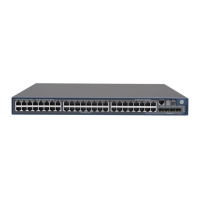
